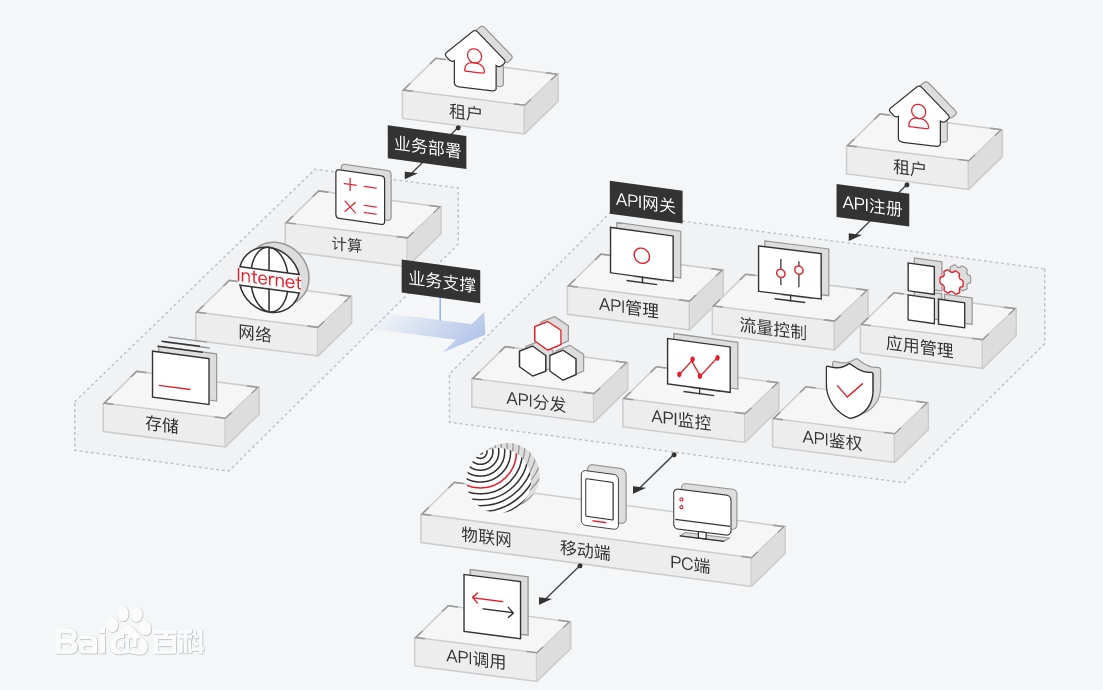Ocelot是一个.NET API网关。该项目面向使用.NET运行微型服务/面向服务的体系结构的人员,这些体系结构需要统一的系统入口点。但是,它可以与任何使用HTTP并在ASP.NET Core支持的平台上运行的东西一起使用。
一、什么是API网关

API网关是所有应用的统一入口,一般放在微服务的最前端。从面向对象设计的角度看,它与外观模式类似。API网关封装了系统内部架构,为每个客户端提供一个定制的API,简化了客户端的调用。API网关的核心要点是:所有的客户端和消费端都通过统一的网关接入微服务,在网关层处理所有的非业务功能(比如负载均衡、流控、熔断、验证、鉴权、监控等等)。
参考资料
二、Ocelot介绍

Ocelot是一个.NET API网关。该项目针对的是使用.NET运行面向微服务/面向服务的体系结构的人,这些体系结构需要统一的入口点。
OCelot特征
- 路由
- 请求聚合
- Consul和Eureka的服务发现
- Kubernetes
- WebSockets
- 认证
- 授权
- 限速
- 高速缓存
- 重试策略/ QoS
- 负载均衡
- 记录/跟踪/关联
- 标头/查询字符串/声明转换
- 自定义中间件/委托处理程序
- 配置/管理REST API
三、Ocelot使用
Ocelot有许多特性,先看看基础配置
{
"ReRoutes": [
{
"UpstreamPathTemplate": "/{everything}",
"UpstreamHttpMethod": [ "Get", "Post", "Delete", "Put" ],
"DownstreamPathTemplate": "/{everything}",
"DownstreamScheme": "http",
"LoadBalancer": "RoundRobin",
"UpstreamHeaderTransform": {
"X-Forwarded-For": "{RemoteIpAddress}"
},
"DownstreamHostAndPorts": [
{
"Host": "localhost",
"Port": 21021,
}
]
},
],
"GlobalConfiguration": {
"BaseUrl": "http://localhost:9000",
}
}进阶配置
{
"ReRoutes": [
{
"UpstreamPathTemplate": "/{everything}",
"UpstreamHttpMethod": [ "Get", "Post", "Delete", "Put" ],
"DownstreamPathTemplate": "/{everything}",
"DownstreamScheme": "http",
"LoadBalancer": "RoundRobin",
"SwaggerKey": "swg1",
"UpstreamHeaderTransform": {
"X-Forwarded-For": "{RemoteIpAddress}"
},
"ServiceName": "ServiceA", // 服务名称,要和 Consul 的服务名称一致
"UseServiceDiscovery": true
},
{
"UpstreamPathTemplate": "/aqr/{everything}",
"UpstreamHttpMethod": [ "Get", "Post", "Delete", "Put" ],
"DownstreamPathTemplate": "/{everything}",
"DownstreamScheme": "http",
"LoadBalancer": "RoundRobin",
"SwaggerKey": "swg2",
"UpstreamHeaderTransform": {
"X-Forwarded-For": "{RemoteIpAddress}"
},
"ServiceName": "ServiceB", // 服务名称,要和 Consul 的服务名称一致
"UseServiceDiscovery": true
}
],
"SwaggerEndPoints": [
{
"Key": "swg1", // 和 ReRoutes 中的 SwaggerKey 相同
"Config": [
{
"Name": "ServiceA API",
"Version": "v1",
"Url": "http://localhost:21021/swagger/v1/swagger.json"
}
]
},
{
"Key": "swg2", // 和 ReRoutes 中的 SwaggerKey 相同
"Config": [
{
"Name": "ServiceB API",
"Version": "v1",
"Url": "http://localhost:21031/swagger/v1/swagger.json"
}
]
}
],
"GlobalConfiguration": {
"BaseUrl": "",
"ServiceDiscoveryProvider": {
"Host": "172.16.96.107",
"Port": 8500
"ConfigurationKey": "Oceolot_A" //存储在Consul上的Key
}
}
}- 本文链接:http://uncmd.github.io/microservice/ocelot/
- 版权声明:本博客所有文章除特别声明外,均默认采用 许可协议。
若您想及时得到回复提醒,建议跳转 GitHub Issues 评论。
若没有本文 Issue,您可以使用 Comment 模版新建。
GitHub Issues